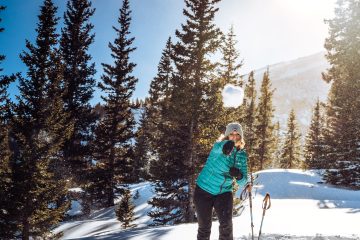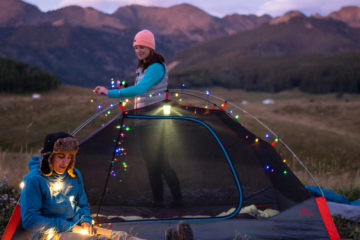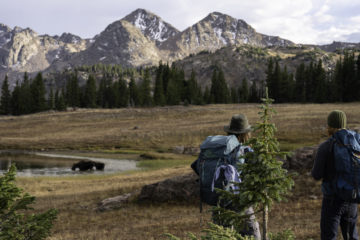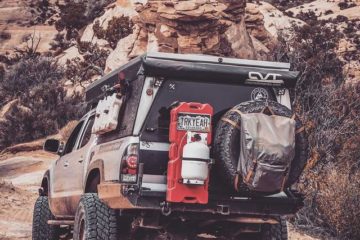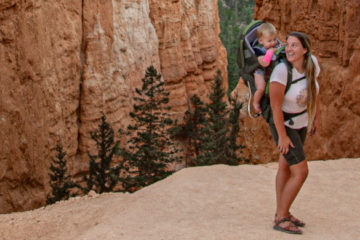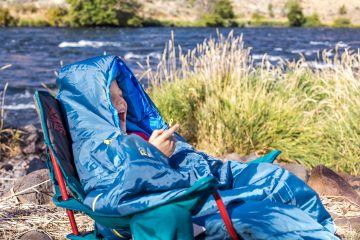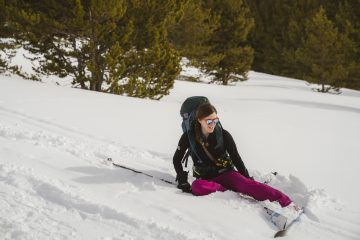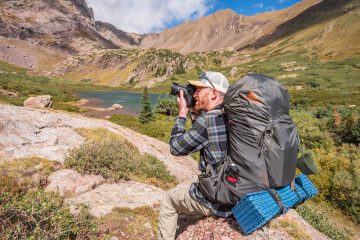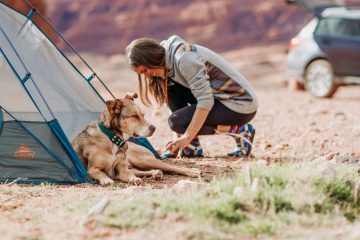Our founder, Dick Kelty, would have been 100 this year. As an OG outdoor entrepreneur, lifelong adventurer and undisputed life of the party, Dick set an incredible example for how to grab life by the GORP…and GET. AFTER. IT. In celebration of his would-be hundy, your friends here at Kelty have compiled our top 10 fun facts about the history of backpacking—including some tasty old-school tidbits from our own company archives. Enjoy!

Will Hike for Food. Before the advent of agriculture gave early hominids a bit of leisure time, there’s proof our ancestors used backpacks for longer foraging trips. In the early 90s, two German hikers discovered a body partially buried in the Similaun Glacier, on the border between Austria and Italy. Turns out, the “Ice Man” had been there for awhile—5,300 years, in fact—and was found with a primitive larch-and-leather backpack. Traces of grain found in the pack suggested to researchers that he lived outside the area but hiked there to gather food.
Spirit Animal. The earliest recorded account of humans hiking for *fun* dates back to 1543. In a letter to a friend, Swiss botanist and philosopher (plant ponderer?) Conrad Gesner wrote that he hiked in the mountains “for the sake of bodily exercise and the delight of the spirit.” This was pretty unusual during a time in which mountains were widely believed to house demons, dragons and evil spirits—so Gesner was either a literal trailblazer or one spooky dude.
No Bad Raps. No history of backpacking would be complete without mention of the Biggie and Tupac of nineteenth-century nature nerds. Henry David Thoreau (East Coast reprezent!), a naturalist and professional surveyor, was known to hike with a Native American guide and ultimately ditched his city digs for life off the grid. Naturalist, mountaineer and known Yosemite pimp John Muir (California love!) founded the Sierra Club and spent his life working to educate the American public about the importance of preserving wild places.
War Games. We’re pretty peaceful types, but we’re also glad that World War II had this unexpected positive outcome: advancing the history of backpacking just a little bit more. As teams of engineers on both sides worked to help foot soldiers carry increasingly heavy loads over long distances, the “packboard” came into being. This first mass-produced pack featured heavy canvas lashed to a piece of plywood with shoulder straps. By 1950, Sears Robuck was selling a version of this—but it was heavy, uncomfortable and only came in one size.
Pack Leader. In the early 1950s, most hikers relied on army surplus stores or, like Dick Kelty, making their own packs. Formerly a machinist for Northrup and Lockheed, Kelty started his backpacking company in the garage of his Glendale home—which, like the business, he built himself. Though the earliest packs were not far from the army packs Dick had seen overseas, tireless trial and error with his hiking buddies eventually sparked the invention of the waist belt: the first of many innovations that would help to shape the history of backpacking. Kelty Pack was born in 1952 and sold 29 packs the first year for a total of $678.85 in gross sales.
 Early model Kelty Pack, given to Kelty by the family of Loren Janes, a legendary Hollywood stuntman who met Dick Kelty backpacking on a trail. Upon seeing Dick’s prototype pack, Loren asked him to make him a pack as well.
Early model Kelty Pack, given to Kelty by the family of Loren Janes, a legendary Hollywood stuntman who met Dick Kelty backpacking on a trail. Upon seeing Dick’s prototype pack, Loren asked him to make him a pack as well.

Evolution of pack design by 1969
Lighten Up, Francis. At this point in the history of backpacking, Dick’s aircraft industry training kicked in—and he started to think about leveraging materials that reduced carry weight. Aluminum tubing and ripstop nylon, both coveted in aeronautics for their high strength-to-weight ratios, replaced wood and canvas in his frame pack designs. He trail tested his packs in the nearby Sierras on weekends, and strength tested them by tossing them off the roof of his house. Each new backpacking trip gave him tiny improvements.

Dick Kelty & family hiking in the Sierras.
Mail Order + Trail Order. The original Kelty external-frame backpacks were sold in Sierra Club newsletters, and made by hand in the Kelty garage (where Dick kept his workshop) and kitchen (where his wife, Nena, did her sewing). Positive feedback poured in from customers all over the world, including anecdotes and suggestions from users that drove new features. Summit magazine editors, for example, were responsible for the addition of the stuff sack.
“I call Dick the Henry Ford of backpacking. By taking the weight off the hiker’s shoulders and putting it on the hips…he made it enjoyable for people to go backpacking. Until Dick came along with the Kelty Pack, backpacks made your shoulders hurt…Dick’s design was revolutionary.”
—Nick Clinch
Crowd Control. As Kelty external-frame backpacks made the wilderness more accessible, most people rejoiced. One notable exception: infamous Manson Family member Lynette “Squeaky” Fromme, who would ultimately be imprisoned for her plot to assassinate President Gerald Ford, apparently ALSO had Dick Kelty on her “hit list.” She believed that his designs enabled more people to enjoy—and ultimately, to ruin—nature. The Kelty family received an official warning from the FBI…and breathed a sigh of relief when Fromme was convicted.
Natural Beauty. Throughout the history of backpacking, from Kelty’s humble beginnings in the 1950s to today, Dick’s innovations are too numerous to mention. The industry has grown up a lot, and we’ve “matured” right along with it. I mean, kind of? We’re still all kids at heart. As proof, we’ll leave you with this image from the Kelty family archives featuring Dick’s wife Nena and daughters Angie and Anita, and the first prototype of a kid carrier. Nena remembers being afraid she was going to topple over backward with the weight of the carrier & baby. It was a failure, but we’ve improved quite a bit since then with these.

See y’all on the trail!
For more Built for Play fun, follow @keltybuilt on Facebook and Instagram.
